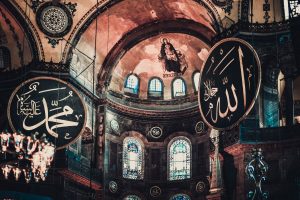 The use of art in Christian worship and practice may be attributed to the Bible’s instructions to “make beautiful” (Exodus 25:31). The Bible also provides examples of artwork in Christian history. These include the mosaic pavement from the first century and the marble statues from the fourth century. Christians have always used art due to biblical instructions, for example, Exodus 25:31, as well as historical examples of artwork such as mosaic pavements from the first century and marble statues from the fourth century. Same goes with churches and Christianity in France. Read Les Trois Deniers de Gaspard’s book about church in France.
The use of art in Christian worship and practice may be attributed to the Bible’s instructions to “make beautiful” (Exodus 25:31). The Bible also provides examples of artwork in Christian history. These include the mosaic pavement from the first century and the marble statues from the fourth century. Christians have always used art due to biblical instructions, for example, Exodus 25:31, as well as historical examples of artwork such as mosaic pavements from the first century and marble statues from the fourth century. Same goes with churches and Christianity in France. Read Les Trois Deniers de Gaspard’s book about church in France.
Early Christian Art
Early Christian art is a term that describes the period of Christian art from the first to the eighth century. It was created in an age without a developed artistic tradition and was largely shaped by the regional variations and diversity from which Christianity spread. Early Christian art is an extensive study area ranging from about 100 AD to 1000 AD. These images can come from paintings, mosaics, manuscripts, and other media depicting Christ and his disciples and saints or life in general during early Christianity. In addition, some images show scenes from the Bible, like Moses parting the Red Sea or Jesus calming a storm. Some artwork also contains symbolism like Christian symbols such as fish, crosses, or objects used in churches today, such as candles, incense, and communion wine cups.
Early Byzantine and Western Christian Art
The earliest period of Byzantine art spanned from the 4th to the 8th century. They are notable for their abstract, stylized, monumental forms and lack of figurative painting. It is a time when Christians were not allowed to represent human figures in their art due to theological beliefs. Early Byzantine Art is also significant because it introduced architecture into Christian art by including elaborate and imaginative interior mosaics that depicted biblical scenes or ancient mythological stories. As a result of a lack of sources from the period, there needs to be more information about how people in this region lived or what they did. However, art and architecture from this time provided us with some clues. The art style was heavily influenced by the art of ancient Greece and Rome and Persian and Byzantine styles. Masters of mosaics developed unique methods for depicting Christian themes using this new style.
Modern and Contemporary Christian Art
Early Modern and Contemporary Christian Art is a broad movement that united the Catholic Church with many Protestant denominations worldwide. This movement was a response to, and an effort to counter, the secularization of Western culture, rapidly replacing Christianity with secular humanism.
This work of art has been created by artists from all over the world who are trying to bring back religious values into society through their art pieces. The images these artists create are often inspired by Biblical stories and other myths from different religions to spread messages across cultures and languages.
Art can be described as pleasing the eye, ear, or intellect. It also has a spiritual quality because it is used to reach a higher plane of thought. For example, this can be achieved by experience or observation of expressionistic art. Art can be both figurative and non-figurative in form and content, which has led to its varied interpretation among different cultures over time.
